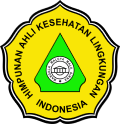EFEKTIVITAS EKSTRAK KULIT BATANG MAJA (Aegle marmelos L) TERHADAP KEMATIAN LARVA NYAMUK Anopheles sp.
DOI:
https://doi.org/10.26630/rj.v15i2.2813Keywords:
Larvae, Anopheles, Aegle marmelos L, concentration, contact timeAbstract
Malaria is one of the public health problems that can cause death in infants, children under five, pregnant women and reduces work productivity. Vector control by chemical means leads to vector resistance and environmental pollution and negatively impacts public and animal health. This study aims to determine the effectiveness of the bark extract of Maja (Aegle marmelos L) against the death of Anopheles sp mosquito larvae with concentrations of 5%, 10%, 20%, 40%, and 50% and the observation of contact times every 15 minutes, 30 minutes, 60 minutes, 90 minutes and 120 minutes. The study used a Completely Randomized Design (CRD) with Factorial. Extraction used maceration method, with 70% ethanol as solvent. Larvae of Anopheles sp. instar III obtained from malaria endemic area. The test used a 200 ml container, with two replications. All data were analyzed by two way ANOVA and Tukey HSD test. This study obtained mortality of 93.3% larvae at a concentration of 50% and a contact time of 120 minutes. The results of statistical analysis showed a significant effect of concentration (p=0.0001), contact time (p=0.0001), and interaction concentration-contact time (p=0.004) on the mortality of Anopheles sp. mosquito larvae. This study has proven the use of bark extract of Maja (Aegle marmelos L) as an alternative bio-insecticide in controlling mosquito larvae of Anopheles sp.References
Afrane, Y. A., Mweresa, N. G., Wanjala, C. L., Gilbreath III, T. M., Zhou, G., Lee, M.-C., … Yan, G. (2016). Evaluation of long-lasting microbial larvicide for malaria vector control in Kenya. Malaria Journal, 15(1), 577. https://doi.org/10.1186/s12936-016-1626-6
Akdeniz, D., & Özmen, A. (2011). Antimitotic effects of the biopesticide oxymatrine. Caryologia, 64(1), 117–120. https://doi.org/10.1080/00087114.2011.10589771
Ashley, E. A., Pyae Phyo, A., & Woodrow, C. J. (2018). Malaria. The Lancet, 391(10130), 1608–1621. https://doi.org/10.1016/S0140-6736(18)30324-6
Atul, P., Nilesh, D., Akkatai, R., & Kamlakar, K. (2012). a Review on Aegle Marmelos: a Potential Medicinal Tree. International Research Journal of Pharmacy, 3(8), 86–91.
Benelli, G., & Beier, J. C. (2017). Current vector control challenges in the fight against malaria. Acta Tropica, 174, 91–96. https://doi.org/10.1016/j.actatropica.2017.06.028
Cannon, J. G., Burton, R. A., Wood, S. G., & Owen, N. L. (2004). Naturally Occurring Fish Poisons from Plants. Journal of Chemical Education, 81(10), 1457. https://doi.org/10.1021/ed081p1457
Chaieb, I. (2017). Saponins as Insecticides : A Review Saponins as Insecticides : a Review, Tunisian. Journal of Plant. Protection, 5(1), 39–50.
Desai, M., Gutman, J., Hill, J., ter Kuile, F. O., Fernandes, S., Webster, J., … ter Kuile, F. O. (2018). Series Malaria in pregnancy 2 Prevention of malaria in pregnancy. Lancet Infect Dis, 18(18), 119–151. https://doi.org/10.1016/S1473-3099(18)30064-1
Dinas Kesehatan Kabupaten Lampung Selatan. (2017). Profil Kesehatan Kabupaten Lampung Selatan. Kalianda: Dinas Kesehatan Kabupaten Lampung Selatan.
Elango, G., Rahuman, A. A., Bagavan, A., Kamaraj, C., Zahir, A. A., & Venkatesan, C. (2009). Laboratory study on larvicidal activity of indigenous plant extracts against Anopheles subpictus and Culex tritaeniorhynchus. Parasitology Research, 104(6), 1381–1388. https://doi.org/10.1007/s00436-009-1339-7
Fatmawaty, A. A., Hermita, N., Hastuti, D., Kartina, A. M., & Hilal, S. (2019). Phytochemical analysis of beneng taro (Xanthosoma undipes K.Koch) leaves: Cultivation as raw material for biopesticides for eco-friendly agriculture. IOP Conference Series: Earth and Environmental Science, 383(1), 012006. https://doi.org/10.1088/1755-1315/383/1/012006
Ghosh, A. (2013). Efficacy of phytosterol as mosquito larvicide. Asian Pacific Journal of Tropical Disease, 3(3), 252. https://doi.org/10.1016/S2222-1808(13)60050-X
Hidayati, L., & Suprihatini, S. (2020). Pengaruh Pemberian Ekstrak Biji Mahoni (Swietenia mahagoni) Terhadap Kematian Larva Culex sp. ASPIRATOR - Journal of Vector-Borne Disease Studies, 12(1), 45–52. https://doi.org/10.22435/asp.v12i1.2171
Jiang, X., Hansen, H. C. B., Strobel, B. W., & Cedergreen, N. (2018). What is the aquatic toxicity of saponin-rich plant extracts used as biopesticides? Environmental Pollution, 236, 416–424. https://doi.org/10.1016/j.envpol.2018.01.058
Kemenkes, R. I. (2018). Profil Kesehatan Indonesia Tahun 2017 (R. Kurniawan, Yudianto, B. Hardhana, & T. Siswanti, Eds.). Retrieved from website: http://www.kemkes.go.id
Kim, S. Il, & Ahn, Y. J. (2017). Larvicidal activity of lignans and alkaloid identified in Zanthoxylum piperitum bark toward insecticide-susceptible and wild Culex pipiens pallens and Aedes aegypti. Parasites and Vectors, 10(1), 1–10. https://doi.org/10.1186/s13071-017-2154-0
Leffler, E. M., Band, G., Busby, G. B. J., Kivinen, K., Le, Q. S., Clarke, G. M., … Kwiatkowski, D. P. (2017). Resistance to malaria through structural variation of red blood cell invasion receptors. Science, 356(6343), eaam6393. https://doi.org/10.1126/science.aam6393
McCann, R. S., van den Berg, H., Diggle, P. J., van Vugt, M., Terlouw, D. J., Phiri, K. S., … Takken, W. (2017). Assessment of the effect of larval source management and house improvement on malaria transmission when added to standard malaria control strategies in southern Malawi: study protocol for a cluster-randomised controlled trial. BMC Infectious Diseases, 17(1), 639. https://doi.org/10.1186/s12879-017-2749-2
Mcclure, E. M., Meshnick, S. R., Lazebnik, N., Mungai, P., King, C. L., Hudgens, M., … Dent, A. E. (2014). A cohort study of Plasmodium falciparum malaria in pregnancy and associations with uteroplacental blood flow and fetal anthropometrics in Kenya. International Journal of Gynecology and Obstetrics, 126(1), 78–82. https://doi.org/10.1016/j.ijgo.2014.01.016
Meibalan, E., & Marti, M. (2017). Biology of Malaria Transmission. Cold Spring Harbor Perspectives in Medicine, 7(3), a025452. https://doi.org/10.1101/cshperspect.a025452
Ningsi, E., Yuniar, N., & Fachlevy, A. (2016). Efektivitas Uji Daya Bunuh Ekstrak Daun Pepaya (Carica Papaya L.) Terhadap Larva Nyamuk Anopheles Aconitus Donits Dalam Upaya Pencegahan Penyakit Malaria Di Daerah Persawahan Desa Lalonggombu Kecamatan Andoolo Kabupaten Konawe Selatan. Jurnal Ilmiah Mahasiswa Kesehatan Masyarakat Unsyiah, 1(3), 183424.
Puspa Sari, M., & Priastini Susilowati, R. (2019). Efektivitas Ekstrak Daun Maja (Aegle marmelos (L) Corr) sebagai Larvasida Aedes aegypti. YARSI Medical Journal, 27(1), 001. https://doi.org/10.33476/jky.v27i1.797
Rafael, M. S., Hereira-Rojas, W. J., Roper, J. J., Nunomura, S. M., & Tadei, W. P. (2008). Potential control of Aedes aegypti (Diptera: Culicidae) with Piper aduncum L. (Piperaceae) extracts demonstrated by chromosomal biomarkers and toxic effects on interphase nuclei. Genetics and Molecular Research, 7(3), 772–781. https://doi.org/10.4238/vol7-3gmr481
Rismayani, R. (2013). Manfaat Buah Maja Sebagai Pestisida Nabati Untuk Hama Penggerek Buah Kakao (Conopomorpha cramerella). Warta Penelitian Dan Pengembangan Tanaman Industri, 9(3), 24–26. Retrieved from http://perkebunan.litbang.pertanian.go.id/wp-content/uploads/2014/01/perkebunan_warta-vol19No3-2013-7.pdf
Rogerson, S. J., Desai, M., Mayor, A., Sicuri, E., Taylor, S. M., & van Eijk, A. M. (2018). Burden, pathology, and costs of malaria in pregnancy: new developments for an old problem. The Lancet Infectious Diseases, 18(4), e107–e118. https://doi.org/10.1016/S1473-3099(18)30066-5
Rubio-Moraga, Ã., Gerwig, G. J., Castro-DÃaz, N., Jimeno, M. L., Escribano, J., Fernández, J.-A., & Kamerling, J. P. (2011). Triterpenoid saponins from corms of Crocus sativus: Localization, extraction and characterization. Industrial Crops and Products, 34(3), 1401–1409. https://doi.org/10.1016/j.indcrop.2011.04.013
Russell, T. L., Govella, N. J., Azizi, S., Drakeley, C. J., Kachur, S. P., & Killeen, G. F. (2011). Increased proportions of outdoor feeding among residual malaria vector populations following increased use of insecticide-treated nets in rural Tanzania. Malaria Journal, 10(1), 80. https://doi.org/10.1186/1475-2875-10-80
Sampe, V., & Watuguly, T. (2016). Efektivitas Ekstrak Biji Pangi (Pangium edule Reinw) Terhadap Mortalitas Larva Nyamuk Anopheles. BIOPENDIX: Jurnal Biologi, Pendidikan Dan Terapan, 2(2), 152–159. https://doi.org/10.30598/biopendixvol2issue2page152-159
Sarma, R., Mahanta, S., & Khanikor, B. (2017). Insecticidal Activities of the Essential Oil of Aegle marmelos (Linnaeus, 1800) against Aedes aegypti (Linnaeus, 1762) and Culex quinquefasciatus (Say, 1823). Universal Journal of Agricultural Research, 5(5), 304–311. https://doi.org/10.13189/ujar.2017.050508
Senthil-Nathan, S. (2020). A Review of Resistance Mechanisms of Synthetic Insecticides and Botanicals, Phytochemicals, and Essential Oils as Alternative Larvicidal Agents Against Mosquitoes. Frontiers in Physiology, 10. https://doi.org/10.3389/fphys.2019.01591
Septarini Dian Anitasari, S. D. (2018). Efektivitas Biopestisida Daun Tembelekan (Lantana camara) Terhadap Hama Kutu Daun Aphis sp Tanaman Cabai. Bioma : Jurnal Biologi Dan Pembelajaran Biologi, 3(1). https://doi.org/10.32528/bioma.v3i1.1325
Sinka, M. E., Bangs, M. J., Manguin, S., Chareonviriyaphap, T., Patil, A. P., Temperley, W. H., … Hay, S. I. (2011). The dominant anopheles vectors of human malaria in the Asia-Pacific region: Occurrence data, distribution maps and bionomic précis. Parasites and Vectors, 4(1). https://doi.org/10.1186/1756-3305-4-89
Sowmyashree, K., Chalannavar, R. K., Ghosh, S. K., Nityasree, B. R., & Supriya, S. (2019). Effect of Essential Oils of Aegle marmelos ( L .) Correa and Psidium guajava L . On Larvae of Malaria Vector Anopheles Stephensi Liston. Life Science, Bioinformatics, Pharmaceutical and Chemical Science, 5(1), 704–711. https://doi.org/10.26479/2019.0501.59
Sugiarto, S., Hadi, U. K., Soviana, S., & Hakim, L. (2016). Karakteristik Habitat Larva Anopheles spp. di Desa Sungai Nyamuk, Daerah Endemik Malaria di Kabupaten Nunukan, Kalimantan Utara. Balaba: Jurnal Litbang Pengendalian Penyakit Bersumber Binatang Banjarnegara, 12(1), 47–54. https://doi.org/10.22435/blb.v12i1.4653.47-54
Sukumar, K., Perich, M. J., & Boobar, L. R. (1991). Botanical derivatives in mosquito control: a review. Journal of the American Mosquito Control Association, 7(2), 210–237. Retrieved from http://www.ncbi.nlm.nih.gov/pubmed/1680152
Syafruddin, D., Lestari, Y. E., Permana, D. H., Asih, P. B. S., St. Laurent, B., Zubaidah, S., … Lobo, N. F. (2020). Anopheles sundaicus complex and the presence of Anopheles epiroticus in Indonesia. PLOS Neglected Tropical Diseases, 14(7), e0008385. https://doi.org/10.1371/journal.pntd.0008385
Syam, I., & Pawenrusi, E. P. (2017). Efektifitas Ekstrak Buah Pare(Momordica charantia) Dalam Mematikan Jentik Aedes aegypti. Jurnal Kesehatan Masyarakat Andalas, 10(1), 19. https://doi.org/10.24893/jkma.v10i1.158
Tennyson, S., Ravindran, K. J., & Arivoli, S. (2012). Screening of twenty five plant extracts for larvicidal activity against Culex quinquefasciatus Say (Diptera: Culicidae). Asian Pacific Journal of Tropical Biomedicine, 2(2), S1130–S1134. https://doi.org/10.1016/S2221-1691(12)60372-4
Tusting, L. S., Thwing, J., Sinclair, D., Fillinger, U., Gimnig, J., Bonner, K. E., … Lindsay, S. W. (2013). Mosquito larval source management for controlling malaria. Cochrane Database of Systematic Reviews. https://doi.org/10.1002/14651858.CD008923.pub2
VIineetha, A., & Murugan, K. (2009). Larvicidal and smoke repellency effect of Toddalia asiatica and Aegle marmelos against the dengue vector, Aedes aegypti (Insecta: Diptera: Culicidae). Entomological Research, 39(1), 61–65. https://doi.org/10.1111/j.1748-5967.2008.00193.x
WHO. (2005). Guidelines for laboratory and field testing of mosquito larvicides. In World Health Organization. Retrieved from http://whqlibdoc.who.int/hq/2005/WHO_CDS_WHOPES_GCDPP_2005.13.pdf?ua=1
WHO. (2020). Malaria. Retrieved September 13, 2020, from WHO Regional Publication SEARO website: https://www.who.int/news-room/fact-sheets/detail/malaria
Yasi, R. M., & Lestari, R. F. (2020). Potentials of Grinting Grass (Cynodon dactylon l.) For Biopesticides On Sitophylus Zeamais Motsch Mortality. Journal of Agromedicine and Medical Sciences, 6(1), 37–42. https://doi.org/https://doi.org/10.19184/jams.v6i1.15618
Zanardi, O. Z., Ribeiro, L. do P., Ansante, T. F., Santos, M. S., Bordini, G. P., Yamamoto, P. T., & Vendramim, J. D. (2015). Bioactivity of a matrine-based biopesticide against four pest species of agricultural importance. Crop Protection, 67, 160–167. https://doi.org/10.1016/j.cropro.2014.10.010.
Downloads
Published
How to Cite
Issue
Section
License
Copyright (c) 2021 Ruwa Jurai: Jurnal Kesehatan Lingkungan

This work is licensed under a Creative Commons Attribution-NonCommercial 4.0 International License.

Ruwa Jurai: Jurnal Kesehatan Lingkungan is licensed under a Creative Commons Attribution-NonCommercial 4.0 International License.
Authors who publish with this journal agree to the following terms:
- Authors retain copyright and grant the journal right of first publication with the work simultaneously licensed under a Creative Commons Attribution-Non Commercial License that allows others to share the work with an acknowledgment of the work's authorship and initial publication in this journal.
- Authors are able to enter into separate, additional contractual arrangements for the non-exclusive distribution of the journal's published version of the work (e.g., post it to an institutional repository or publish it in a book), with an acknowledgment of its initial publication in this journal.
- Authors are permitted and encouraged to post their work online (e.g., in institutional repositories or on their website) prior to and during the submission process, as it can lead to productive exchanges, as well as earlier and greater citation of published work.









